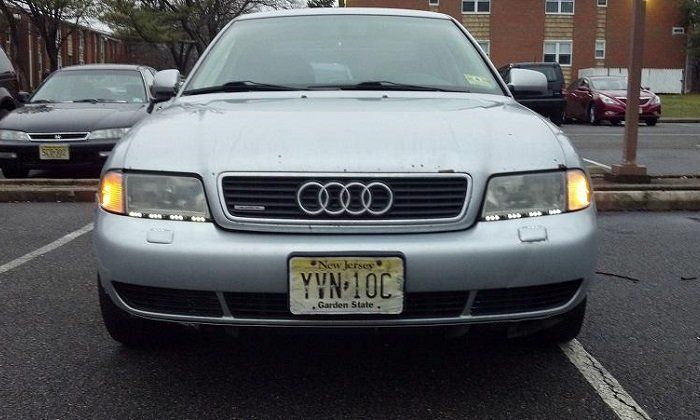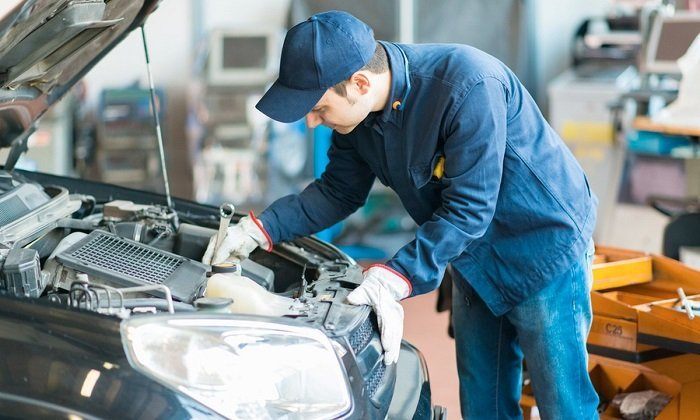by Joshua Thomas
A mechanically sound car should not shake at any point whether it is idle or you are driving. Shaking when idling is an even bigger concern since the vehicle is not being subjected to any pressure from acceleration or the road terrain.
Shaking when idle or rough idling as any motorists often refer to it as is quite a common problem, and many often choose to overlook it, and this is more so if it does not affect the vehicle's drivability.
However, you should never ignore rough idling as it often implies there is a problem that can have adverse consequences if left unchecked. But, to deal with the issue you first need to understand these underlying issues or causes.
Contents

If you find that your car shakes significantly when idling, the best way to deal with the issue is to take it to a professional mechanic. However, it is also important that you understand the probable causes, and here are some of the main ones.
Worn out spark plugs are one of the main causes of car shaking when the engine is idling. Also, when the spark plugs are dirty, the buildup of debris and dirt will affect their functioning, and they might not be able to ignite the fuel correctly.
If the spark plug cannot ignite the fuel properly, the engine's performance will be greatly affected, and this often causes the car to shake when both idling and accelerating.
Fuel injectors ensure that the engine gets just the right dose of fuel to ensure efficient combustion. But, like any other vehicle part, they will get worn out over time, which affects their performance greatly.
Besides wearing out, the fuel injectors can also get dirty and clogged, which also means they will not be able to inject fuel to the engine efficiently.
With the lack of uniformity in the amount of fuel delivered to the vehicle, it will often start shuddering and shaking when idle. And this is because the interruption of the fuel flow to the combustion chamber causes the engine to misbehave.
Along with a consistent and uninterrupted supply of fuel, your engine will also need steady air supply to function efficiently, and this is what the air filters are meant to do.
If you have a dirty or faulty air filter, your engine will not be getting the required air supply which affects its performance significantly as the idling speed will drop from the standard 700 RPM.
This drop is what then causes the car to shake when idling. In some cases, the RPM can drop to a point that the car then stalls completely and you have to start it again.
As the engine is running, the piston will compress the air and fuel mixture before the spark plug fires and ignites it. The ignited mixture then forces the piston downwards as it expands rapidly.
If there is a leak in any of the cylinder’s in the engine, there will be poor compression that then results in less power output. This will unbalance the engine and lead to vibrations when the car is both idling and accelerating.
The timing or serpentine belt can also cause your vehicle to shake when idling if it is cracked, torn or even just stretched a little too much.
A timing belt is tasked with choreographing the actions of different parts and components and hence when it is not working okay, there will be inconsistent timing that often results in the shaking.
The problem with a torn or shaking timing belt will often occur for the high mileage vehicles, and so when you start noticing any cracking, loosening or ribbing in your timing belt, you need to have it replaced soon to prevent catastrophic damages.
Motor mounts are what is tasked with dampening engine vibrations to ensure that anyone in the vehicle does not feel them, and hence making the rides smoother and more comfortable.
Damaged engine motor mounts are easy to diagnose as the problematic ones will be very evident because the engine will often appear lower than it usually is.
And while in most instances the broken motor mounts will be more noticeable when driving as the engine is subjected to more vigorous activity, you should still notice some shuddering or a little rattling when the engine is idling.
Vacuum hoses play an important role in your engine as they help to get rid of exhaust fumes. When the vacuum hose is torn or disconnected, this can cause problems to the engine as it will not be able to get rid of the fumes effectively.
With the inefficient fumes clearance, there will be an air-fuel ratio imbalance which then prevents the engine from running smoothly.
The engine will also lose power and misfire while also shaking and vibrating aggressively when idling.
Engines do not work well if there is dirt or debris in the system no matter how small it may be, and this is more so when it is on sensitive components like the intake valve and fuel injector.
If the fuel intake is dirty, it will deliver inconsistent fuel amounts for every engine cycle, which in turn causes a shake or high-frequency shutter when the engine is idling.
As the accumulation of dirt and debris in the fuel intake intensifies, the problem worsens, and the shaking becomes more severe to a point that you can clearly see the vehicle shaking when the engine is idling.

How you fix the car shaking issue when it is idling depends on the specific cause, and hence no one fix will work for all situations. But, regardless of the underlying issues, there are a few key steps that you will need to follow, which are what we explain below.
Directions
The first step should always be to give your vehicle a thorough inspection to locate the source of the issue. And to do this, you will first need to park it in a safe place to work from and make sure you have all the necessary tools.
Here, the first place to start your check should be the engine, and you should check for things like loose cables and hoses, and also whether the mounts are damaged or not. Also, check other things like the fuel injector, air, and fuel filters and spark plugs.
Your vehicle's computer can make it easy to check the problem as it will typically store error codes when it detects any engine issues or problems with surrounding components, and so a scan can be very helpful.
Once you identify the source of the problem in the step above, the next one will be to analyze the extent of the damage or any other underlying issues.
Whether it is the fuel injector, air filter or spark plug, you need to analyze it carefully to determine whether the issue can be repaired or you have to replace the problematic component.
Now that you understand the problem and have analyzed its extent, you can go ahead and fix it. And the fix can range from cleaning up the part to replacing it.
Whether you have to clean a part or replace it, you need to make sure that you know what you are doing as some jobs will require some skill to do.
Simple things like cleaning and replacing spark plugs should be effortless for most motorists, but others like replacing the fuel injectors can be quite hectic. Hence, the most important thing for this step is to make sure you do not bite more than you can chew and end up damaging the vehicle further.
After replacing, fixing or cleaning the problematic part, the last step will be to take the vehicle for a test drive to determine whether the issue is fixed or not.
When going for the test drive, you will need to be keen enough as you check whether you can feel any vibrations both when the car is accelerating and idling. Sometimes the vibration can still be there but be too subtle for you to notice.
If the shaking is gone, the car is okay now, and there is nothing more to do, but if not, the other alternative is to take it to a professional mechanic.
Car shaking when idling is not always a cause for alarm because, in many instances, the causes of the shaking are issues you can easily deal with at home on your own. But, there are some situations when you may need to take the vehicle to a professional mechanic.
Below are examples of cases where it will be wise to take your vehicle to a professional mechanic.
While the car shaking when idling is an easy problem to ignore, you should never be tempted to overlook it as it usually indicates there is an underlying problem with your vehicle that you need to get fixed.
From simple things like dirty spark plugs and loose vacuum hoses to other more serious issues such as damaged motor mounts and poor compressions, there are almost countless things that can cause this problem.
But, the good news is that this is a fairly easy problem to deal with as you will only need to identify the underlying cause and fix it. And with a routine maintenance schedule, you will hardly ever have to worry about car shakes when the engine is idling.
Sources
 |
 |
 |
 |

About Joshua Thomas
Joshua Thomas just simply loves cars and willing to work on them whenever there's chance... sometimes for free.
He started CarCareTotal back in 2017 from the advices of total strangers who witnessed his amazing skills in car repairs here and there.
His goal with this creation is to help car owners better learn how to maintain and repair their cars; as such, the site would cover alot of areas: troubleshooting, product recommendations, tips & tricks.
Joshua received Bachelor of Science in Mechanical Engineering at San Diego State University.
Just Car Care